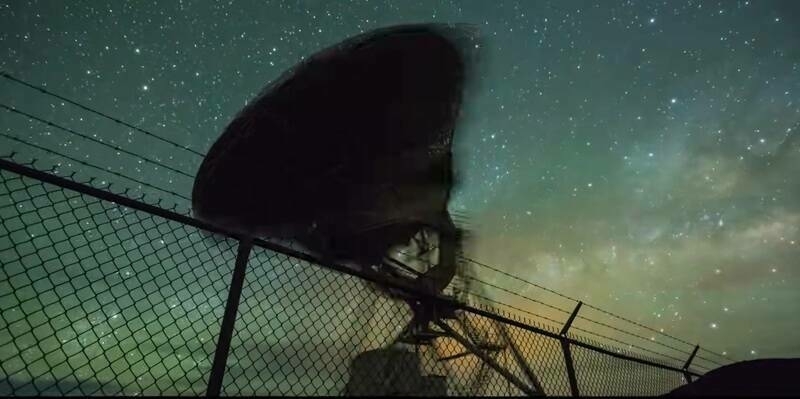What is a trig pillar?
The shining (sometimes) white monoliths are now instantly recognised by any walker, or geography lover and have inspired many a trigbagger. They’re quintessentially British, and even made it onto Bill Bryson’s list of favourite British items in his 2015 book ‘The Road to Little Dribbling’. But what were they for? Now largely redundant, back in 1936, they formed a state-of-the-art network built to re-map Britain, dreamt up by Brigadier Martin Hotine. Responsible for the design, planning and implementation of the retriangulation, Hotine also designed the iconic trig pillar to provide a solid base for the theodolites used by the survey teams to improve the accuracy of their readings.
Some 6,500 were built, to be used for triangulation, the mathematical process that makes accurate map making possible. It works by determining the location of a point by measuring angles to it from known points at either end of a fixed baseline and in this case, those known points were the 6,500 trig pillars, across the country. OS surveying teams spent 26 years gathering measurements across Britain to create a highly accurate map of the country, but time and technologies have moved on enormously to the point where the traditional trig pillar is now obsolete in its original guise. They still act as a beacon for many an outdoors lover, but they no longer help shape our maps. Look out for tomorrow’s blog where we’ll share more detail on the history of the trig pillar, how they were built and used, the inner workings and much more.
The trig pillar today
Although 6,500+ trig pillars were built, hundreds have been lost to housing developments, farming, coastal erosion and other causes. The greatest source of information on trig pillars (and other Ordnance Survey surveying marks) is www.trigpointing.uk. Users on there regularly ‘bag’ trig pillars and take photos to track their condition.
While there are many trig-baggers out there, trig-bagger extraordinaire Rob Woodall completed his 14-year mission to bag all of Britain’s trig pillars last weekend in Fife. He’s bagged 6,190 trig pillars, a seriously impressive achievement. We joined his final bagging expedition and awarded him a mounted flush bracket to mark the moment. Look out for Thursday’s blog with more details on his final trig-bagging adventure.
The Trig Pillar Trail Challenge
We’d love you to get involved in the trig pillar birthday celebrations too and have put together The Trig Pillar Trail Challenge. Rob Woodall, our #GetOutside champions and some of us at OS, have nominated our favourite trig pillars around the country. Many of our champions have also put together walking, running or cycling routes for you to reach the trig pillars using OS Maps.
To celebrate the trig pillar and getting outside to explore Britain, if you take a photo of one, or with one, anywhere around the country, send us a photo on Twitter or Instagram using #TrigPillar80, and you could win a limited edition T-shirt.
How do OS survey today?
The modern equivalent is the OS Net network of 110 Global Navigation Satellite System(GNSS) receivers. Our surveyors use OS Net and GNSS technology every day to instantly position new map detail to within a few centimetres. What took many hours at Cold Ashby in 1936 we can now do in seconds and to a far greater degree of accuracy. Find out more about our current surveying process later this week on the blog.
Trig trivia
- The survey control network of trig pillars was accurate to 20 metres over the entire length of Great Britain. Today the receivers that make up the OS Net network are coordinated to an accuracy of just 3mm over the same area.
- Over 6,500 trig pillars were built for the retriangulation of which we think somewhere in the region of 6,000 are still standing. In total the retriangulation had in excess of 30,000 coordinated points. The modern OS Net network performs the same function with just 110 points.
- Measuring angles by eye from a trig pillar meant the retriangulation was reliant on good weather – perhaps part of the reason it took until 1962 to complete! Modern GNSS surveying works in all weathers and is available 24 hours a day.
- Trig pillars are mostly made of cast concrete but a few are built from local stone cemented together.
- Like an iceberg, there is a large part of the trig pillar below the surface.
- There are many dedicated trigbaggers out there and even a website called trigpointing.co.uk. Rob Woodall will have bagged all the trigs still standing on 17 April 2016, a task which has taken 14 years to complete.
- While we no longer use the trig pillars, they are still our responsibility to maintain. If you do spot a trig pillar looking unsafe, let us know, so that we can take a look and decide on the best way to remedy it.
- Some trig pillars have been redecorated. We don’t condone this, but it’s preferable to those sorry ones that are covered in graffiti. We’ve seen an alien, a minion, Welsh dragons and English roses so far. Again, spot one in a particularly bad way and let us know so that we can see if we can sort it out.
- The highest trig pillar, unsurprisingly, sits atop Ben Nevis. The lowest trig pillar is at Little Ouse, sited at -1m!
- The vast majority of trig pillars follow the standard Hotine design, but there are some ‘Vanessas’ which are taller, cylindrical concrete pillars.
- Don’t forget, you can get involved in the #TrigPillar80 celebrations by taking a walk to one of the 25 trigs in our Trig Pillar Trail Challenge, or by sharing your trig photos with us on Twitter and Instagram.
- Take a look at our Flickr album with trig pillar photos past and present.
See the BBC gallery celebrating the 80th birthday of the trig pillar.
Subscribe to our newsletter
Stay updated on the latest technology, innovation product arrivals and exciting offers to your inbox.
Newsletter

